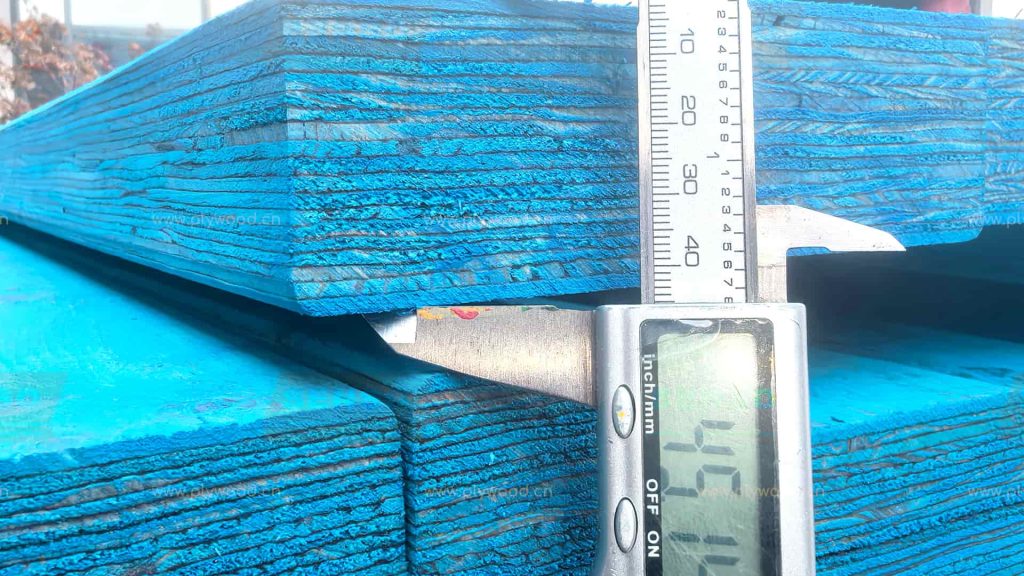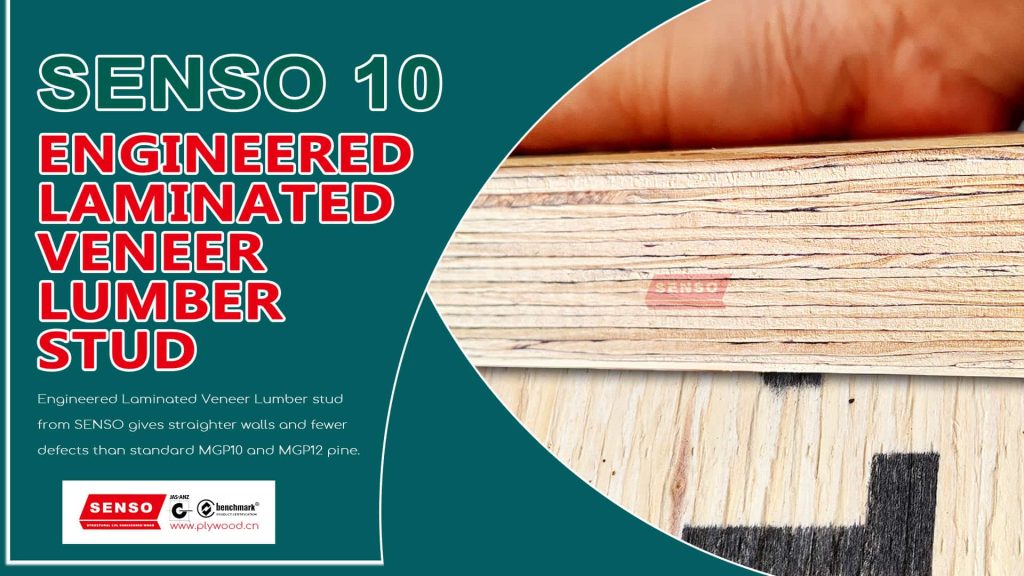Why engineered laminated veneer lumber stud matters for today’s frames
Engineered laminated veneer lumber stud wall frames carry far more than roof loads. They also carry tiles, cabinets, linings and the client’s final judgement. When frames move, every finish tells the story. Doors bind, cornice cracks and long hallways start to wave.
Traditional MGP10 pine framing has handled many of these tasks for years. MGP12 structural pine still offers a strong step up on heavy jobs. Yet modern homes push these grades harder than before. Higher ceilings, larger windows and full height joinery now appear in even modest builds. These features demand better control over line and stiffness.
engineered Laminated Veneer Lumber stud systems answer that demand. They give builders the same basic wall layout, but with far more predictable behaviour. SENSO brings this technology into a relaxed, site friendly package that suits real projects, not just design charts.

What is an engineered laminated veneer lumber stud?
An engineered Laminated Veneer Lumber stud belongs to the LVL family. Thin veneers peel from selected logs, then dry to a tight moisture range. The layers glue together under heat and pressure with grain aligned along the length. This process creates a dense, uniform section.
Natural timber defects spread across many thin layers rather than sitting in one weak spot. Knots and grain changes still exist, but their impact reduces sharply. The result is a stud with consistent strength and stiffness from end to end. Each piece behaves much closer to the design values on paper.
SENSO engineered Laminated Veneer Lumber stud builds on this base. We focus on straightness, moisture control and clean machining. Studs arrive straight, dimensionally accurate and ready for standard tools. Crews cut and fix them with the same saws and nail guns used for pine. That makes adoption smooth, even for busy teams under schedule pressure.
How MGP10 and MGP12 pine framing behaves on site
MGP10 pine framing remains the entry point for many stud racks. Machine grading sorts each board into a strength band. The grade delivers enough capacity for basic wall framing in standard housing. It offers good value and broad supply.
MGP12 structural pine lifts the design numbers. It suits heavier roofs, taller walls and selected high load areas. Many engineers choose MGP12 around large openings or upper levels. Builders like that it still feels like normal pine under the saw and hammer.
However, both grades share the same core issue. They are still solid timber. Each stud comes from one log with its own grain pattern and knot layout. Even inside a single stress grade, stiffness and movement vary. Some sticks stay straight. Others twist or bow once the frame stands and the weather changes.
On low walls with simple finishes, that variation can pass unnoticed. On tiled bathrooms, long hallways or tall feature walls, it quickly becomes a problem. Carpenters then spend time sorting packs, straightening frames and cutting out the worst pieces.
Engineered LVL stud vs MGP 10 vs MGP 12
| Aspect | SENSO engineered LVL stud | MGP10 pine framing | MGP12 structural pine |
| Product type | Engineered laminated veneer lumber | Solid plantation pine | Solid plantation pine |
| Performance band | Tight, consistent structural values | Base residential stress grade | Higher residential stress grade |
| Straightness | Very straight, low twist and bow | More sorting, more variation | Improved, still variable |
| Moisture behaviour | Starts dry, stable response | Greater movement with climate | Similar to MGP10 |
| Best applications | Feature walls, tiles, tall spaces | Standard, cost driven frames | Heavier loads, key walls |
| Typical treatment | H2 or similar internal classes | H2, H2F, H3 widely available | H2, H2F widely available |
Engineered Laminated Veneer Lumber stud vs pine: key differences
At a glance, the main options look like this. SENSO engineered LVL studs behave like precision components. MGP 10 and MGP 12 remain strong but follow natural patterns.
The LVL option brings a tight performance band, higher and more reliable stiffness and very good straightness. Pine options bring familiar handling, wide availability and lower initial price. That trade off guides which material suits each wall.
For wholesalers, the comparison table at the front of this document becomes a simple training tool. It helps staff explain where a premium stud adds real value, and where basic grades still make sense.

Straightness and finish quality with engineered laminated veneer lumber stud
Straight walls improve life for every trade. Flat frames mean smoother plasterboard joints, neater cornice and cleaner skirting lines. Tiles sit with less lippage in showers and long bathrooms. Cabinets, wardrobes and feature panels need fewer packers behind the carcass.
An engineered Laminated Veneer Lumber stud supports that straightness. The LVL layup resists bow, crook and twist much better than many sawn studs. Members start dry and hold their line through storage, installation and early service life. Crews see fewer problem sticks that refuse to sit straight in the frame.
With MGP10 pine framing, good results still arrive, but only with more effort. Carpenters check each length off the pack. Weak pieces move into short studs or blocking. Bent pieces need clamps and extra time to bring walls back to line. MGP12 behaves slightly better, yet natural variation remains.
SENSO engineered Laminated Veneer Lumber stud cuts that hidden labour. Frames stand faster. Walls need fewer adjustments and packers. Downstream trades notice that background surfaces feel flatter and more solid. Over time, that leads to fewer complaints about wavy corridors or cracked grout lines.
Cost, waste and the real installed price
On a price list, pine often looks cheaper per metre. MGP10 usually sits at the bottom, MGP12 in the middle and engineered Laminated Veneer Lumber stud at the top. That is only part of the story. Real project cost depends on waste, labour and rework.
Waste is the first hidden cost. Many LVL studs from SENSO go directly into the frame. Reject rates stay low because the product remains straight and stable. Pine packs usually produce more short off cuts and twisted pieces. Those off cuts fill skips, which then cost money to move and dump.
Labour adds the second hidden cost. Time spent sorting, swapping and straightening studs does not show on the timber invoice. It does show in wages, overtime and missed deadlines. engineered Laminated Veneer Lumber stud reduces that noise. Frames go up in a smoother rhythm. Crews stand walls, lock them plumb and move on. Other trades follow on faster because they meet flatter surfaces.
Rework often costs the most. Call backs for cracked tiles, binding doors or bowed feature walls eat into margin and morale. LVL framing lowers these risks by holding shape and stiffness. Many builders find that reduced rework covers the price gap on the first project that uses LVL in key walls.
Durability, termite treatment and moisture behaviour
Indoor wall frames need more than strength. They also need the right treatment and moisture response. Most markets now demand termite protection for internal framing in risk zones.
MGP10 pine framing and MGP12 structural pine both come in treated grades. H2 and similar systems protect internal, above ground framing. H3 grades handle some external, above ground applications. Builders know these options and use them daily.
An engineered Laminated Veneer Lumber stud can match this protection. LVL production allows glue line treatment and surface systems that reach the full section, depending on the specification. SENSO engineered Laminated Veneer Lumber stud can align with common hazard classes. Designers then choose between LVL and pine based on performance, not on basic durability.
Moisture movement behaves differently in LVL. Solid pine shrinks and swells more with seasonal change. Uneven drying can cause twist, bow and joint gaps. LVL studs start at a lower, more uniform moisture content. Bonded veneers help the section respond in a more even way. Over time, joints stay tighter and finishes remain more stable.

Design freedom using engineered Laminated Veneer Lumber stud
Modern homes ask more from wall framing. Taller ceilings, stacked windows, large openings and heavy finishes all increase demand on studs. Frames must carry higher loads and still keep deflection within tight limits.
An engineered Laminated Veneer Lumber stud helps unlock this freedom. The product offers high stiffness and strength for its size. Tall walls, stair voids, wide window jambs and heavy cabinet walls all benefit. Movement stays within small limits, even under mixed loads.
Designers can often keep familiar stud spacing when using LVL studs, depending on the span and load case. Sometimes they may reduce the number of studs around large openings. That can simplify fixing lines and create more space for services and insulation. SENSO supports these designs with clear technical data and practical design guidance.
LVL studs also integrate well with LVL beams and other engineered timber framing elements. The entire structure then behaves like one system. Load paths stay clear, deflection control improves and design checks become more straightforward.
Where MGP10 and MGP12 pine still make sense
engineered Laminated Veneer Lumber stud products do not aim to replace pine everywhere. Pine still suits many walls. Low internal partitions with light loads and simple finishes rarely need premium studs. In those cases, MGP10 pine framing remains a smart, economical choice.
MGP12 structural pine works well when loads rise but geometry stays simple. Roof beams, selected upper floor walls and some bracing lines still fit this grade. Many builders and clients like solid timber for its familiar feel and long history.
A mixed framing strategy now appears on many smart projects. Standard internal partitions and low risk walls stay in MGP10 or MGP12. Critical zones step up to LVL. Tiled wet areas, kitchen walls, tall living spaces, long corridors and feature façades move to SENSO engineered Laminated Veneer Lumber stud. This mix keeps budgets steady while lifting performance where owners notice most.
How SENSO engineered Laminated Veneer Lumber stud supports wholesalers
Wholesalers need more than technical gains. They need a framing range that makes sense at the counter and in the yard. One simple ladder works well. MGP10 pine framing covers entry level work. MGP12 structural pine handles mid tier structural demands. SENSO engineered Laminated Veneer Lumber stud takes the premium step for demanding walls.
This ladder gives sales teams clear language. They can match stud choice to ceiling height, finish level and client risk tolerance with just a few questions. The structure protects margin and reduces the urge for customers to visit competitors for engineered wall studs.
Stock handling also improves. LVL studs arrive straight and consistent. Returns for severe warp or twist drop. High visibility projects usually pull these premium studs first, which lifts average invoice value. Over time, as builders trust the product, usage grows from a few key walls into wider parts of the frame.
Choosing engineered laminated veneer lumber stud on the next project
Every project starts with a simple question. Which stud belongs in which wall? Instead of chasing one answer for every situation, smart teams now use a mix. MGP10 and MGP12 pine carry modest loads and forgiving finishes. SENSO engineered Laminated Veneer Lumber stud protects high value, high risk or high stress walls.
That approach keeps the supply chain simple and flexible. It lets wholesalers offer a complete solution rather than just a price. It gives builders calmer sites and fewer late night call backs. Most importantly, it gives owners homes that still feel straight, solid and quiet many years after handover.
When the next frame goes on the drawing board, it makes sense to mark the critical walls first. Then SENSO engineered Laminated Veneer Lumber stud can step in where it matters most, while pine continues to serve where it works best. This balanced system reflects how real frames stand, and how real projects succeed.

LVL Timber
In the realm of commercial construction, structural integrity is paramount. SENSO Laminated Veneer Lumber (LVL) beams, recognized for their superior strength and durability, play a significant role in building robust structures that withstand the test of time.
Unveiling SENSO LVL Timber
SENSO LVL Timber are crafted with meticulous precision, harnessing the strength of laminated wood. These beams, renowned for their structural features like cross-orientation, superior strength, stiffness, and dimensional stability, redefine construction standards.
SENSO LVL Advantages in Commercial Construction
ROCPLY LVL Beam bring multiple benefits to commercial construction:
- Superior Strength and Stability: SENSO LVL Timber ensure buildings are robust, long-lasting, and resilient.
- Flexibility and Customization: Our LVL Beams can be tailored to suit diverse construction requirements.
- Cost-Effectiveness: SENSO strikes the perfect balance between quality and affordability.
- Sustainability: We uphold green practices, ensuring our products are environmentally friendly.
- Moisture and Fire Resistance: SENSO Structural LVL are designed to resist moisture and fire, enhancing safety.
- Variety and Aesthetic Appeal: We offer a range of sizes and decorative options, catering to various aesthetic needs.
Adherence to Industry Standards
SENSO commitment to quality shines through in our adherence to strict JAS-ANZ standards. Our laminated wood LVL surpass these standards, reinforcing our commitment to delivering high-performance and reliable products.
LVL Timber: Enhancing Structural Integrity
SENSO LVL Beams are vital to maintaining a building’s structural integrity. With outstanding load-bearing capacity, shear strength, dimensional stability, and resistance to humidity, our LVL Beam uphold the structural rigidity of buildings, meeting diverse architectural demands.
Diverse Industries and Applications
SENSO LVL Timber are embraced across numerous industries, including commercial construction, interior design, furniture manufacturing, and many more. The superior quality and versatility of our products make them the first choice for various applications.
Choose SENSO LVL Timber
ROCPLY LVL Beam are a testament to our unwavering commitment to quality, performance, and sustainability. They enhance the structural integrity of commercial buildings while catering to diverse architectural needs. Discover more about SENSO range of LVL timber products, connect with our sales team, or make your purchase today – we’re ready to redefine your construction experience.
Post time: Nov-17-2025

